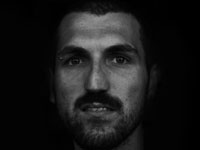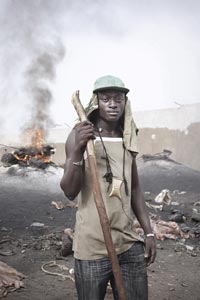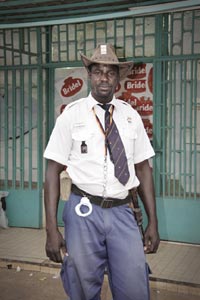Interview - Nicola Lo Calzo
Italian photographer wins award for Africa
by Rosslyn Hyams
Article published on the 2009-07-10 Latest update 2009-08-23 14:49 TU
"The aim for me was to allow those people to speak out through the images - all those men and women who live and work along the banks of the Niger River."
Lo Calzo's Inside Niger series of portraits corresponded exactly to the SFR Jeunes Talents Photo-Arles 2009 competition subject of revealing people who would otherwise be forgotten. His photographs tell the viewer long and rich stories about who these people are and where they come from.
"It's fundamental for me in my method of working always to inform and to criticise. I don't judge my subjects, but it's very important to tell the truth about these people, to give them the chance to speak out. The informative and documentary aspect is the base for my artistic work, " the artist told RFI's English Service.
"That was most important for me, making contact, human-to-human. Then once I'd established a relationship with them, it was they who decided how they wanted to be portrayed. They chose the pose. Some of them are very classical, but it was their choice how they wanted to appear in front of my lens. That's why the portraits convey a certain truth. Their gaze, the way they look at the lens. There's an element of provocation there. It creates a link between themselves and any person who will be looking at them. They really want to present themselves in that way in front of a camera."
Although Lo Calzo was assisted by a non-governmental organisation called Projet Pan-Africain, he said that it was a challenge to take such insightful photos of fellow-humans.
"I had first to gain their confidence. In Africa when you work as a photographer, it's not easy, you know, to approach people. Especially for Muslims, photography is seen as something of an aggressive medium. So the exchange on my part was the portrait and I want to give them the photographs."
Lo Calzo studied at Turin University where he earned an MA in Visual Arts specialising in photography. He also studied landscaping which he says influences his photographic endeavours.
"The way in which I compose, I frame, comes from my training as a landscape designer. Also the relationship I try to establish with the place, especially in this portrait project shown at the Rencontres d'Arles, is a direct result of my training as a landscape architect."
Although the environment is almost as sharply defined as the human subject matter in Lo Calzo's photography it is because it has an effect on human beings and tells much about their lives, he explained.
"What's important for me is the people I photograph, to show humanity. I think the environment is a question of chance. In an arid environment it's true that certain emotions may come out that wouldn't in another context. In any case, I also work in urban locations, like I did in Niger, in the capital Niamey. I'll do the same in South Africa in a socially-oriented project with the Bushmen, who live in townships in the middle of the Kalahari desert. That's one of my next projects and it will be called Come Back to Kalahari."
He is also working on another Niger-based project which is due for completion in 2009. He will be photographing a fertility festival in the Sahel with the ethnic Peul Oudades people.
Lo Calzo adopted France in 2005, as well as humanity and art, is Africa. Lo Calzo makes no bones about that.
"Africa is my second country as it were, after Italy, and then France. I don't have anything against France, but I have a particularly strong tie with Africa," said Lo Calzo.
"My work is also connected with my lifestyle in Paris. I live in Paris which is multi-cultural. I see lots of African people all the time there. I have lots of Africans around me. So the tie with Africa is omnipresent in my life, both professional and private," he added.








